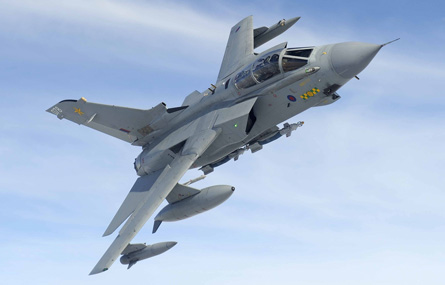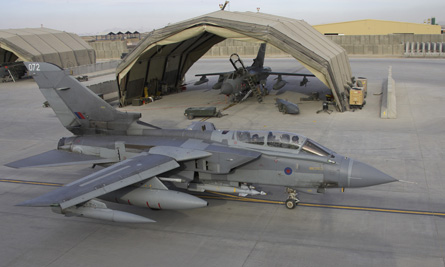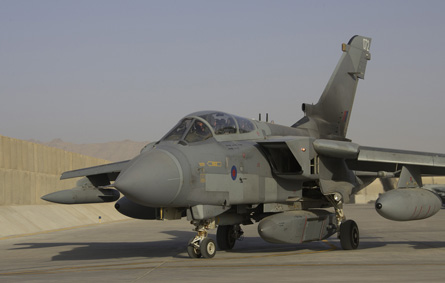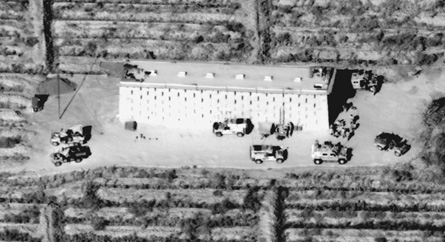Revised rules of engagement in Afghanistan have seen the UK Royal Air Force's Panavia Tornado GR4 crews adopt a "less kinetic" approach to combating operations by the Taliban, but senior officers say the shift is paying dividends.
Speaking just days after returning to Marham in Norfolk following a three-month tour of duty at Kandahar airfield, personnel from the RAF's 31 Sqn said they adjusted well to the new campaign strategy.
This was imposed late last year by International Security Assistance Force commander US Army Gen Stanley McChrystal, who wants NATO-led forces to "reshape the fight to achieve more lasting effects, grow our partnership with Afghan security forces, and strengthen relationships with government officials and the Afghan people".
"Our role was very much in line with the guidelines set by Gen McChrystal: to support the troops, where possible without killing anybody," says Wg Cdr Ian Gale, officer commanding 31 Sqn. "We've been pretty successful in replacing bombs and bullets with 'shows of force'."
Widely used by coalition aircraft, the show of force is an act of deterrent where a combat aircraft is used to surprise Taliban insurgents by flying very low and fast over their heads, normally in full afterburner.
 |
|---|
© Jamie Hunter/Aviacom |
The "Goldstars" flew with weapons including the Paveway IV precision-guided bomb |
"The Taliban know then that the aircraft's wingman is up there, and could put weapons down within seconds," says Marham station commander Gp Capt "Rocky" Rochelle. "The vast majority of the time that [threat] is enough," says Gale. "If the enemy 'melt away' then it's a success."
Gale stresses that "the rules of engagement allow us, where required, to release weapons very quickly. But it requires a lot of thought before we go kinetic." As another 31 Sqn officer puts it: "You don't win the hearts and minds of the local population by bombing their neighbourhood every day."
But once called upon for lethal action, the GR4 can employ its Raytheon Systems Paveway IV 226kg (500lb) precision-guided bombs and MBDA Brimstone air-to-surface missiles. Gale declines to confirm whether his unit fired any of the latter type during its tour, but says: "We're absolutely delighted with having it - it's a world-beating moving target striker."
The 31 Sqn detachment of roughly 140 people returned home after its aircraft had logged roughly 1,500 flight hours in 400 sorties, including around 100 during which their crews provided support for troops in contact. Marham-based 9 Sqn is now performing the duty. "The endurance of the Tornado means we can provide a constant presence for hours on end," says Gale. Sorties averaged 3-4h, but some exceeded 6h.
 |
|---|
© Ian Daniels/Crown Copyright |
Around 400 sorties were flown from Afghanistan's Kandahar airfield |
Missions included providing "overwatch" and communications relay services for the British Army's Boeing/Westland Apache AH1 attack helicopters. Sqn Ldr Matt Bressani, 31 Sqn executive officer, says that during one of his missions Tornados designated a target for Apaches after first being cued by the RAF's new Raytheon Sentinel R1 airborne stand-off radar aircraft.
"Although we are part of a coalition, it was great for the UK to conduct such a complicated mission using only its own assets," he says.
A pair of Tornados was also held at ground scramble readiness for a period each day, and when called upon, 31 Sqn had aircraft aloft within less than 15min.
But one of the principal tasks undertaken by the Tornado force was in conducting work to counter the threat posed to ground forces by improvised explosive devices. "We did an awful lot of work looking for IEDs," says Gale. The GR4's Goodrich Raptor reconnaissance pod was used for route clearing applications, while its Northrop Grumman/Rafael Litening III electro-optical/infrared targeting pod was also used to spot disturbed ground and buried heat sources.
 |
|---|
© Ian Daniels/Crown Copyright |
The Raptor reconnaissance pod has been used during counter-IED activities |
Wide area stereo images from the Raptor's sensor suite are checked by personnel from the Marham-based Tactical Imagery-Intelligence Wing (TIW), which typically has one officer and 12 analysts deployed at Kandahar and Camp Bastion in Helmand Province.
"We are established for 125 personnel," says TIW officer commanding Wg Cdr Andrew Stewart. "We have 110 at the moment, and are growing." Some 85 of his current staff are professional image analysts, and data collected in theatre can also be assessed in the UK by using a "reachback" capability. The wing also supports the British Army's interim use of the Elbit Systems Hermes 450 tactical unmanned air vehicle.
Intelligence from the Raptor sensor can also be used to support deliberate operations, such as when ground forces storm a Taliban compound. Image analysts support mission preparations by calculating the height of perimeter walls, locating entry doors, highlighting possible enemy strong points and even identifying helicopter landing zones.
 |
|---|
© Tactical Imagery-Intelligence Wing/Crown Copyright |
The Raptor pod provides high-quality images from stand-off range. This example shows a British forward operating base in Afghanistan |
"Mosaic" images are also regularly prepared using multiple narrow field-of-view images collected from the Litening III payload, Stewart says.
Noting that the Tornado GR4 force assumed the Afghanistan mission last July after sustaining a more than 19-year continuous presence in the Middle East, Gale notes: "You're getting pretty good value for money for an aircraft that you bought in the 1980s."
Source: Flight International























